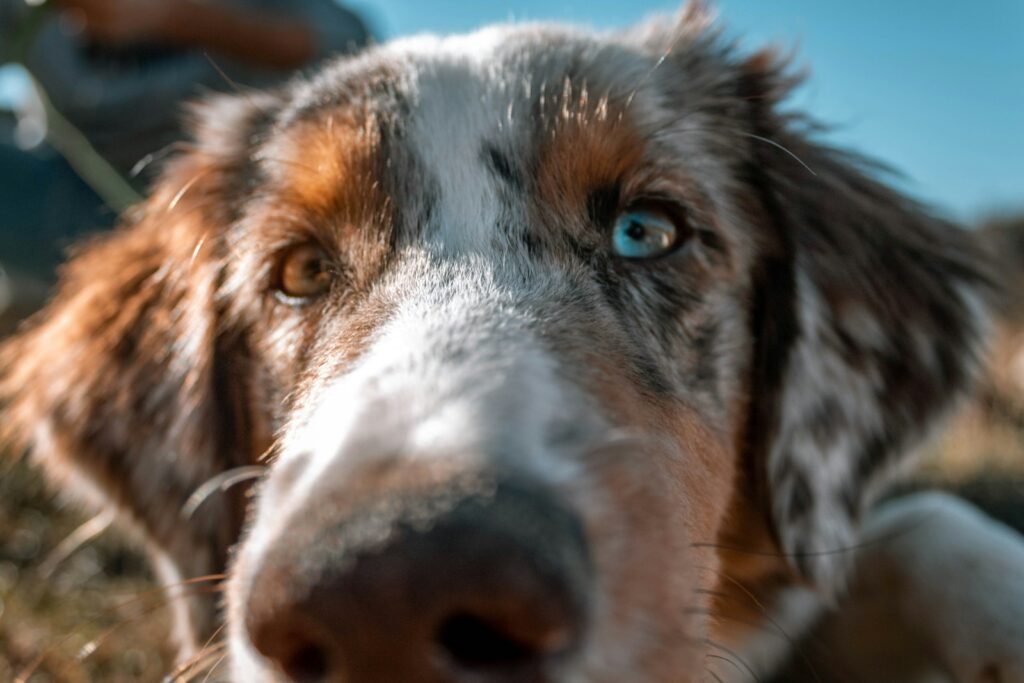Dogs are not just our loyal companions; they are also remarkable sniffers. Their ability to detect and differentiate scents is almost like having a superpower in their noses. Have you ever wondered why dogs have such a strong sense of smell? This fascinating ability is not just a random trait but a key aspect of their survival and communication tools. From helping in search and rescue missions to simply finding where their favorite toy is hiding, a dog’s sense of smell is crucial. Let’s dive into the science and wonders behind why dogs can sniff out almost anything!
The Science Behind a Dog’s Nose
Anatomy of a Dog’s Nose
Dogs’ noses are designed to be powerful smelling machines. When we compare a dog’s olfactory capabilities to humans, the difference is astounding. Here’s why:
- More Scent Receptors: Dogs have up to 300 million olfactory receptors in their noses, compared to about 6 million in humans. This means they can detect smells in much lower concentrations, making their sense of smell about 10,000 to 100,000 times more sensitive than ours.
- Specialized Brain Function: The part of a dog’s brain that analyzes smells is proportionally 40 times greater than ours. This specialization allows them to identify and remember distinct scents much more proficiently.
- Nose Structure: The inside of a dog’s nose is lined with a complex maze of air channels, which helps them sniff continuously and discern different odors even in the same sniff.
How Dogs Use Their Smell
Dogs use their sense of smell to interpret the world. Here’s how they do it:
- Detecting Danger: Dogs can smell certain chemicals and hormones, such as adrenaline and pheromones, which can alert them to danger or the emotional state of others.
- Hunting and Tracking: Historically, dogs relied on their sense of smell to find prey and navigate their environment.
- Communication: Dogs can detect the scent marks left by other dogs. These scents carry information such as the dog’s identity, sex, age, and even its health status.
Practical Applications of Dogs’ Smell
Dogs’ extraordinary sense of smell is not just interesting biologically; it also has practical applications in human society:
- Search and Rescue: Dogs are invaluable in search and rescue operations because they can detect human scent under collapsed buildings, in large crowds, and vast natural landscapes.
- Medical Detection: Some dogs are trained to sniff out diseases. For example, they can detect certain cancers and even warn their owners before a diabetic episode or an epileptic seizure.
- Security and Law Enforcement: Detection dogs are used at airports, borders, and large events to sniff out drugs, explosives, and other contraband.
Did You Know?
- Wet Nose Function: Ever noticed a dog’s nose is usually wet? That wetness helps them absorb scent chemicals, enhancing their ability to detect smells.
- Sniffing Mechanics: Dogs can take up to five breaths per second when sniffing compared to two breaths per second normally. This rapid breathing helps them gather more scent information.
- Selective Breeding: Certain breeds like Bloodhounds, Beagles, and German Shepherds have been selectively bred to enhance their smelling abilities for specific tasks like hunting or tracking.
Conclusion
The strong sense of smell in dogs is a combination of evolutionary biology, anatomical superiority, and practical necessity. It allows them to communicate, understand their environment, and even assist humans in multiple ways. Next time you see a dog sniffing around the park or at work with law enforcement, you’ll understand the complexity and power of what they’re doing with just their nose!
FAQs
Q: Can all dogs smell equally well? A: While all dogs have superior smelling abilities compared to humans, some breeds have more developed senses than others. Breeds like Bloodhounds, Basset Hounds, and Labradors are known for their exceptional olfactory capabilities.
Q: How do dogs use their sense of smell to communicate? A: Dogs leave behind scent marks, which other dogs can smell and gather information from, such as the marker’s health, stress level, and if a female is in heat.
Q: What is the most unusual thing dogs can be trained to sniff out? A: Dogs can be trained to detect a variety of unusual things, including electronic devices, bed bugs, and even diseases such as malaria.
Relevant Articles to Explore
For further reading on related topics, you might enjoy visiting:
- “Unveiling the Mystery: Why Do Dogs Relentlessly Shadow Their Owners?”
- “The Curious Case of Itchy Paws: Why Do Dogs Scratch Themselves?”
- “How Small Dogs Can Have Shark-Like Teeth: The Science Behind It”



